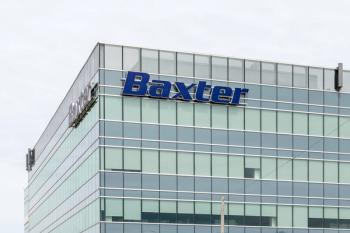
- Medical Economics August 2020
- Volume 97
- Issue 12
COVID-19 staff reductions
How to prevent legal fallout from staff layoffs.
COVID-19 has created a global public health disaster. As world leaders struggle to contain the spread of the virus, they are also trying to figure out how to balance public health needs with economic stability.
For practice owners, especially those who have been hard-hit by the economic impact of the virus, making decisions to keep their business viable may not be easy. This could mean cutting jobs or furloughing staff. The question becomes how to balance the needs of the practice and staff and avoid legal fallout.
A grim picture for business
In the U.S. alone, unemployment rates jumped by 10.3 percentage points in April to 14.7%, the highest monthly unemployment increase since the Bureau of Labor Statistics (BLS) started tracking the data in 1948. More than 23 million Americans were out of work in April, a one-month increase of 15.9 million people, with 1.4 million job losses in the health care industry.
While some of these job losses may be temporary, others are not. Dentists, physicians and other health care practitioners have had their livelihoods hit hardest in the health care sector. About 243,000 jobs were lost in physician offices and another 205,000 in other health care provider offices. The number of unemployed people in the education and health care sectors increased by nearly fivefold in the last year, according to the BLS, from about 512,000 to more than 2.5 million.
The problem for practices
While the hope is that business will at some point return to normal, that still may be a long way off. In the meantime, the number of outpatient visits and elective procedures has dropped sharply, along with the revenue for these office-based services.
Richard G. Roberts, M.D., J.D., FAAFP, FCLM, is a professor of family medicine at the University of Wisconsin School of Medicine & Public Health in Madison and a practicing family doctor in a small, rural area. He says the pandemic has cast a spotlight on inequalities in health care, among patients and even among different types of practices. He pointed out the irony of some states pleading for help and more health care workers even as other states were forced to furlough health care workers.
While virtual visits have surged as a way to meet outpatient care needs during the COVID-19 pandemic, primary care visit volume is down 50%, and some practices were forced to cut costs right away, he says. “Patients are afraid to come in, and we are telling them not to come in,” Roberts says.
Although the majority of physicians are employed in health systems, there are still many physicians in small practices or groups who own or have a stake in their practice and have to make tough financial decisions.
Large systems have been able to move employees around and repurpose them instead of furloughing them, but this also presents challenges.
“Say you have been working as a nursing assistant in primary care, and now you are bedside with COVID-19 patients,” he says. “It’s sort of like asking someone to move into a position with great risk to them without adequate protection or preparation.”
Smaller practices don’t have that option, however.
“In a lot of primary practices, there is not the financial reserve to just keep going full speed ahead, and there’s not the ability to repurpose all that much,” Roberts says. “There’s just not as much latitude and flexibility available to you. You may have no choice but to furlough or terminate people’s employment.”
In the early days of the crisis, practice owners initially were concerned with how to protect their businesses while balancing the safety of staff.
“At least at the beginning of the virus taking hold, we started to hear from a lot of our medical practices about what this all means. How do we balance financial viability and medical staff needs for the front line?” says Shelly Waggoner, M.S., CEBS, SHRM-SCP, senior vice president of human resources at COPIC. COPIC is a Colorado-based medical liability insurance provider. It has been offering support to its more than 12,000 physician members through its HR Helpline and other virtual support during the COVID-19 crisis.
As the pandemic continued, many practice owners were forced to look at furloughing or terminating staff. With smaller and independent practices often lacking internal human resources departments, Waggoner says she fielded a lot of calls about how to have difficult, and sometimes legally loaded, conversations.
“A lot of it was just helping to coach practices through how to have these conversations with employees, how to file for labor and unemployment,” Waggoner says. “We had a number of questions about the [Coronavirus Aid, Relief and Economic Security Act], having to pay out sick time and the impact and burden on practices to do so. Some that were on the border of 50 employees were having to pay salaries without the means to do so.”
The contract is king, if there is one
Ericka L. Adler, J.D., LLM, a shareholder at Roetzel & Andress in Chicago, Illinois, says the best advice she has to avoid wrongful termination claims is to honor the contract, if there is one.
“No matter what, if you don’t follow the contract you are opening yourself up to the risk of liability. Most contracts don’t give you the ability to just cut off someone’s salary or furlough them just because of [COVID-19] or any other reason,” Adler says. “Look first to see what the contract allows. Not every doctor out there will run and sue, but we are talking about risk aversion. Nobody’s ever gone through this, so most contracts weren’t written with a pandemic in mind, and we must work with the contract we have in place.”
Some employers are trying to get ahead of changes that have to be made by sending memos to update existing contracts.
“Technically, most contracts have a provision that says the agreement can only be amended in writing,” Adler says. “If you send a memo and it’s not signed by the employee, it’s not an effective amendment.”
The only way to avoid risk altogether is to honor the contract that was signed, she says. For employees without specific contracts, such as nurses or support staff, it’s safest to stick to following any existing policies in place for the practice and otherwise make sure you comply with employment laws. However, if a business tries to terminate an employee who is refusing to come to work because the practice doesn’t have appropriate safety provisions in place, the employee could have grounds to make a wrongful termination claim. Practices must comply with state and federal requirements to protect employees.
Employment laws vary by state, and an employee’s rights when it comes to termination will depend largely on location and contract language. In at-will states, legal rights over wrongful termination are limited, Roberts adds. To win a wrongful termination claim, he says the employer usually has to do something outrageous, such as terminate an employee for racial or ethnic reasons. When these claims are made, it also falls to the employee to prove it.
If you are terminating for a valid cause, be sure to track and document the reason, he adds. In the COVID crisis, some of these reasons will be financial. In these cases, Roberts says he thinks it’s highly unlikely courts will side with employees in a wrongful termination claim.
“It’s going to be hard for a court to say to an employer, ‘Yes, you have to pay that even if you’re going to run out of money in 28 days,’” he says. “Wrongful termination claims by employees are unlikely to be awarded because the courts at the end of the day will be pragmatic. You lost your job along with a quarter of the rest of America.”
Setting the stage for the next wave
If the virus continues to circulate, resulting in a second wave that is worse than the first, Adler says the problems from the early days of the pandemic will continue. That’s why she is working now to set up protections for her client for the next wave of infections.
“Clients will be best protected by having written policies in place that comply with available [COVID-19] guidance, and sticking to a standard of care to protect workers,” Adler says, adding she expects some liability problems from employers who open too soon. “There’s going to be more spikes in [COVID-19]. This will be cyclical, so we need to be prepared.”
Adler says in recent weeks she has been making amendments to employment contracts for employers she represents. These amendments will allow for easier termination in similar circumstances or unilateral changes to compensation in preparation for another round of practice closings.
“Anyone preparing a new contract or amendment is already preparing,” Adler says. “It will be easier for employers to terminate and not negotiate the next time around.”
She has seen disputes over furloughs, repurposing, safety, relocations and fears over COVID-19. The pandemic has forced changes and created business problems, but it hasn’t given employers free rein to change contracts, she says.
“If you are claiming a termination cause, you have to be able to defend it. But you don’t get to just walk away from a contract because it’s convenient,” Adler says. “At the end of the day, [COVID-19] did not change contract law.”
When it’s all over
During discussions about furloughs and layoffs, another concern Waggoner is hearing from practice owners is the fear they won’t have the ability to return to business as usual — whenever and whatever that is.
“One of the biggest concerns for them is what the new normal will be, and I want to make sure they have the talent there and ready to work again,” Waggoner says.
Staff members are being furloughed, and some may look for new work. Others are afraid.
“For clinicians, this is part of what they do, and they accept a level of risk knowing they are on the front line of health care,” Waggoner says. “But there’s a whole host of people who work in the health care community [who] are also being exposed. It’s some of those individuals that have a heightened level of concern.”
Adler says furloughs and layoffs are slowing down now, as many states consider some form of reopening from quarantines. Most of the attorneys at her firm who specialize in corporate business law are focusing now on how to handle employees who don’t want to come back to work because they are making more in unemployment. They also are drafting policies about how to come back to work. Many employers have negotiated reductions in pay or work hours to manage staffing and budgets, but many of those agreements were made without an end date. In negotiating contracts for her employee clients, Adler says she has tried to get any compensation that was lost during the worst of the pandemic back in some form, even as an end-of-the-year bonus.
Employees also will have to decide what changes they are willing to tolerate to stay in their position.
“A lot of people assume hospitals and employers got all kinds of money, and they may have gotten money. But they also have a lot of expenses, so that does not mean funds are available to just pay out lost wages. Another issue related to reopening is that some employees just refuse to come back to work,” Adler says, adding that the Occupational Safety and Health Administration (OSHA) requires employers to establish a workplace “free from recognized hazards that are causing or likely to cause death or serious physical harm.”
“Refusing to go to work just because you’re afraid, that’s not okay. If a safety complaint is raised, OSHA requires the employer to address a legitimate concern,” Adler says.
Roberts says it’s important to evaluate long-term needs and make sacrifices accordingly. While an employer may be struggling to keep staff on during the crisis, finding and training new workers when business returns to a normal pace will cost time and money.
“Losing good employees can hurt practice for months and years to come, in terms of quality of care,” he says.
In talking with employees about furloughs, work reductions and an eventual return to work, Waggoner suggests being open to their fears and concerns.
“What we thought was once not a high-risk position is different now. Things have changed,” Waggoner says. “Some practices are instituting a consent form for staff to acknowledge that working at the practice increases their risk of [COVID-19] exposure, that they [won’t] hold the practice liable and that they are employed at will.”
Waggoner says a number of practices she works with have shared that some employees have taken advantage of federal family leave programs during the COVID crisis, and some are looking for ways to come back to work safely or part ways altogether.
“The key is to follow the CDC’s guidelines, as well as any state-specific guidelines,” Waggoner says. This includes how to clean, how many people to allow in buildings at a time, temperature checks and personal protective gear guidelines. “[It helps] them limit some of the contact that happens in places like waiting rooms and [shows] them some of the protocols.”
For workers who don’t feel safe coming back to a practice, Waggoner says employers ideally should try to work with them on federal leave arrangements, find alternate work arrangements or consider a mutual decision to part ways. In some cases, employers have been surprised by employees refusing to work and then claiming wrongful termination or trying to claim unemployment benefits.
“I talked to a practice yesterday that had an employee who wasn’t comfortable coming back and asked for leave without pay, then filed for unemployment,” Waggoner says. “I think some practices are caught off-guard by that.”
Under normal circumstances, an employer would not be liable for unemployment when the employee initiated it, she explains. There is a bit of nuance in this situation because of the risks COVID-19 presents to both employees and employers.
If a worker is fired for wrongdoing or not performing well, the employer will not have to pay unemployment. When an employee is fired because there is some other reason they cannot do their job — a global pandemic, for example — Waggoner says it’s a “gray area.”
In this situation, the government is providing help in the form of small-business loans and payroll protection. Typically, employers are charged for unemployment and could have a higher tax liability, but unemployment claims related to COVID-19 won’t be counted against employers in this case, Waggoner says.
“It really is a silver lining in this, that when there’s so much out of their control, they don’t have to worry about that, as well,” she says.
Employers should always be mitigating risk when it comes to unemployment claims and lawsuits over termination, but Waggoner says it’s helpful to know there’s some relief when things are out of employers’ control.
Small group practices and rural hospitals without their own human resources support seem to have the most trouble with navigating termination claims, Waggoner says. She says that even in at-will states it’s important to protect the practice and have consistent employment policies. Always document problems with an employee, shared conversations and actions taken, she says.
The best bet, Adler says, is to talk to employees about the needs of the practice and a solution that will meet the needs of both the employer and the employee.
“Most employees will be willing to work something out if you go talk to them,” Adler says.
Articles in this issue
about 5 years ago
How to restore physician autonomyabout 5 years ago
Overcome your bias blind spots to better help patientsabout 5 years ago
What will COVID-19 mean for value-based models?about 5 years ago
Improve medication adherence with technologyabout 5 years ago
Telehealth coding guideabout 5 years ago
Preparing for a second wave of COVID-19about 5 years ago
How value-based care can save your practiceabout 5 years ago
Why We Need to Rethink Treating Obesity With Physical Activityabout 5 years ago
New malpractice risks to watch for post-COVID-19Newsletter
Stay informed and empowered with Medical Economics enewsletter, delivering expert insights, financial strategies, practice management tips and technology trends — tailored for today’s physicians.



















